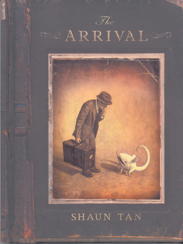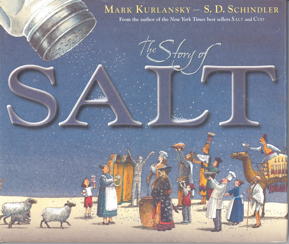Nonfiction & biography
Nonfiction: What makes it
quality nonfiction literature?
Nonfiction defined, its elements, sample activities, biography, &
sample quality nonfiction list
Spread the word: kids love nonfiction!
Consider nonfiction as a read aloud.
Introduction
Nonfiction is literature written or other wise produced in prose based on facts, real people, and real events. Biography, autobiography, history ... As opposed to Fiction which is literature written or produced in prose about imaginary people and events. Made up short stories, novels, or productions.
Quality nonfiction books are finely crafted and designed with rich engaging informational text which is often accompanied with meaningful artistic pictures and visual designs. Many authors work for years creating these books, which children and adults value and enjoy. Many people wrongly believe that children enjoy fiction more than nonfiction. However, research found that 75% of young readers enjoy nonfiction as much or more than fiction.
The misconception of young readers favoring fiction, might come from the desire to have young learners experience reading as enjoyable. And many literate adults considering fiction as a more enjoyable genre that can achieve this goal. However, the majority of recent sales of books to adults are nonfiction and the number of nonfiction books for children is increasing as well as their quality and variety.
Varieties include five types of books, which are browsable, expository, narrative, active such as how-to, and activity books.
Here are four elements of nonfiction and characteristics for each to consider the quality of a work.
Reference for the enjoyment of nonfiction
- Clark, C., and A. Teravainen-Goff. 2020. Children and young people's reading in 2019: Findings from our annual literacy survey. National Literacy Trust.
- Repaskey, L.L., J. Schumm, and J. Johnson. 2017. First and fourth grade boys' and girls' preferences for and perceptions about narrative and expository text. Reading Psychology 38 (8): 808-847.
Elements of Nonfiction
Four Major Elements of Nonfiction
- Lay out
- Information
- Characterization
- Style and Tone
- Interesting story
- Narration
Lay out
Layout should attract the reader and encourage reading and progression through the book.
- Format is interesting, attractive, magnetic
- Table of contents
- Index
- Glossary, pronunciation key
- Book size
- Photographs
- compliment text,
- located near the related text,
- captions, which are accurate,
- illustrations are important. However, the author does not rely too much on them. When information is more comprehensive, than can be communicated with illustrations, then the author communicates with words.
Information
Information includes facts, little known information, and ideas that spark curiosity, creates mystery, and propels the listener/reader/viewer to discover and learn.
- Qualifications of the creator suggest appropriate experience or exceptionality
- Accurate information, which can be verified with other sources
- Includes source information
- Timely or current information
- Supports the story
- Covers the topic in significant detail
- Moves from simple to complex and familiar to unfamiliar
- Creates a feeling of the setting
- Presents information in an organized sequence that enhances the topic
- Non-biased - neutral position
- Is not overly didactic
- Includes safety precautions as needed
Characterization
- Characters are well developed
- No stereotype or biased characterization
- Creates empathy for the characters
- Uses quotations and anecdotes. Particularly in biographies. It is important to use the character's real words and anecdotes that originate from someone with first-hand knowledge of the incidents.
Style and tone
Style should maintain the reader's interest. Nonfiction presents information, but the listener/viewer/reader doesn't need to be bored by a collection of information in choppy sentences. Good style adds interest to the story.
- Narration creates interest and understanding
- Clear
- Precise
- Distinguishes between fact, theory, and opinion
- Vivid
- Could be personalized
- Objective, non-biased not condescending or sarcastic
- Is not didactic
- Does not use propaganda techniques
- Builds suspense or sustains interest and encourages further investigation
- Moves from simple to complex and familiar to unfamiliar
- Presents information in an organized sequence that enhances the topic
- Scope is appropriate for the target audience and increases in complexity at an appropriate rate
- Avoids anthropomorphism
- Vocabulary is relative
- Underlying themes are appropriate and helpful
- Presents ideas/topic in a unique manner or new perspective
- Illustrations compliment and don’t over power the message
- Includes a table of contents, glossary, and index
- Has a theme(s)
- Has a conclusion
Style and tone that presents information - interestingly
Readers are attracted to nonfiction because they have a question or curiosity. With the question answered or curiosity satiated, what is there to keep the reader reading?
Therefore, authors of nonfiction sequence information to create wonder for the reader as they uncover facts that lead from discovery to discovery. In doing so the scope of information must be presented from simple to complex to provide the reader or viewer essential information for understanding ideas presented and prepare them for more complex ideas to come.
The author must also decide the scope of information to present; giving enough detail for comprehension, but not so much as to overwhelm. Mary Lou Clark does this in You and Relativity, she introduces the concept of relativity by saying:
"relative to the sixth floor, the third floor is down,
but relative to the first floor, the third is up."
Then describes frame of reference building the vocabulary and associated concepts needed for later understanding of relativity.
Isaac Asimov, is very good in doing this in books he wrote for children and adults. An example is when he tells the story of how Mendeleev spent years sorting, classifying, and arranging cards that represented elements, until he arranged them in the order of the periodic table, Chemistry.
Jean George in Spring Comes to the Ocean creates curiosity by her descriptions of the animals.
"First he unhooked the muscle at the spiral end of his old shell. Then he pulled himself out and stood vulnerable, so naked that even a wind-blown grain of sand could kill him. His exposed belly was so delicate that a nodding grass blade could cut him in half... He slashed his tail through the air and stuck it into the new shell. Backing carefully, he reached his tail down and around until he felt the last coil of the shell. Then he hooked onto it with a grip so strong that few could pull him out. When at last he had a firm hold, he contracted all his muscles and slammed himself deep into the shell."
Rachel Carson in The Sea Around Us , increases wonder by telling no one was around when the ocean was created long ago. We would expect it impossible to tell how, when she surprises us by telling us that it is, possible.
"Beginnings are apt to be shadowy, and so it is with the beginnings of that great mother of life, the sea. Many people have debated how and when the earth got its ocean, and it is not surprising that their explanations do not always agree. For the plain and inescapable truth is that no one was there to see, and in the absence of eyewitness accounts, there is bound to be a certain disagreement. ... It must be a story pieced together from many sources and containing whole chapters the details of which we can only imagine. The story is founded on the testimony of the Earth's most ancient rocks which were young when the earth was young."
Style and tone of a narration
Many authors use a continuous narrative to join topics in books and sustain interest, Isaac Asimov was an expert with this technique. Another technique, to make facts interesting, is to personalize the readers' experiences by making comparisons and using I and you. Why Can't I?; by Jeanne Bendick , compares the child's feet to a flies and uses you..
"The bottoms of your feet are smooth and slippery. You can make them a little sticky by wearing sneakers. But you're still too heavy to walk up a wall or across the ceiling."
Another consideration in the narrative is the words. Many times authors will use smaller words, because of readability tests or fear that children can't understand big words. But the size of the word is less relevant than if the word is part of every child's vocabulary: like McDonald's, hamburger, refrigerator, aluminum, dinosaur, telephone ...
Another error is personification and sentimental distortion in animal stories. Authors should tell the story through observation, not how they think the animal thinks or feels. Yellow Eyes, by Rutherford Montgomery gives very good and interesting descriptions. Many children want stories that have real people telling the story, use of pronouns we and you achieve this.
Watch for condescension and sarcasm. Superstition in different cultures is often treated in this manner. Edwin Tunis treats his subject this way:
"There was no Indian who was even reasonably free from superstition; it covered everything in the world. When every animal and every tree, and every stream and every natural phenomenon was possessed of a spirit, probably malevolent, it took a lot of finger-crossing and wood-knockin to ward off evil. The Indian was afraid of everything ... of killing snakes and wolves ... of witchcraft and of the owls he associated with it ... superstition ... pervade all Indian living."
Milton Meltzer in All Times, All Peoples: A World History of Slavery wrote:
"white, black, brown, yellow, red- no matter what [your] color, it's likely that someone in [your] family way back, was once a slave."
we're told why:
"It was hard for [the earliest peoples] to feed themselves... That is why, when they raided other people, they killed them instead of taking them prisoner. If the winners had spared the lives of the losers, they would have been unable to feed them."
Then we are told that as farming and food production grew, and it was possible for conquerors to feed prisoners, they kept them as slaves.
Condescension in animal stories is often in the form of anthropomorphism, suggesting the animal is so boring that the author has to make it human to create an exciting story.
Didacticism and propaganda - it is hard for some authors not to preach, especially when the subject is as important as drug abuse. But if the facts are carefully arranged, the evidence presented, ideas will build to prove the point. If not, the book may cause learners to dismiss it as pure propaganda or to create doubt and mistrust in what the authors have written. The author is obligated to present the information in a scientific manner. If there are differing theories or evidence, then the author needs to address them.
Objective - Creators of nonfiction have the obligation of being objective. The creator must sort through information and decide what to include or omit. How much fact and how much narration. If the information should just be possible or probable and if controversial information should be included.
Underlying themes are essential in nonfiction. The manner in which the information is presented creates an underlying theme that may be positive, condescending, negative, curious... or what ever.
It is important to consider the reader's/viewer's/listener's understanding and attitude that will develop with respect to the ideas, subjects, or people in the text; shaping the reader's/viewer's/listener's understanding and attitude by the themes; shaping the ideas and emotions that they take from the piece, which may be carried with them for life.
The Invincible Louisa, has underlying themes which unify the story. Again this is best done with reasoning and examples not by being didactic or preachy.
Notice the different underlying themes, of Columbus and Native Americans, created by the style and tone in the following passages from different historical books:
Columbus and his men saw a new beautiful world. Here were brown men with no clothes at all. Their bodies were painted red and other bright colors... They were pleased to take gifts of bells and beads and scarlet caps. They were a gentle and friendly people.
[The Indians] who had been hiding behind trees and rocks came up to the white men. They came in the friendliest manner. These natives were light brown in color, and rather tall, They had straight, coarse, black hair, and large eyes. They stroked the Spaniards' clothes and their beards. Columbus finally managed to "talk" to the Indians by making signs with his hands. The Indians made signs too. They "told" Columbus he was welcome.
[All Columbus saw] were naked, red-skinned savages. They threw themselves to the ground and worshiped Columbus and his bearded men ... They thought that gods had descended from the heavens on white-winged birds. They led the white gods to their homes. Curiosity quickly overcame fear on the part of the people of the island, and soon they came out to meet these strange men from another world.
These very handsome people were Tainos ... Columbus called them Indians. He described them as gentle and helpful in every way. They wore no clothes, and many of the men painted their bodies.
...the only sign of gold was the gold rings that the natives wore in their noses. Indeed, that was all they wore. The people were as naked, Columbus said, "as their mothers bore them" which of course, was pretty naked. Otherwise, they were normal looking. They didn't have umbrella feet or eyes on their shoulders.
Instructional ideas to Analyze Nonfiction
Helping Students -
Learn How to Identify and Use Nonfiction
Nonfiction is literature written in prose based on facts, real people, and real events. Biography, autobiography, history...
Fiction - is literature written in prose that is about imaginary people and events. Made up short stories and novels.
Identifying Nonfiction and Fiction
Learners need to use both words within the context of literature to understand and remember their meaning. They easily confuse which is which.
Word associations of - (fact : nonfiction) and (not fact : fiction) are easily switched.
Even the associations of (nonfiction : true) and (fiction : false) can be switched.
Seeing the non in nonfiction, can cause students to think not and thinking not true seems more sensible than not not true or not false. No wonder they get confused.
Learning the definitions is one problem. A second problem is learners often believe or want something to be true so even knowing the meanings of fiction and non fiction may still not be enough to have them identify a piece of literature accordingly.
A good discussion about the meaning of fiction and nonfiction, how to remember, and how to decide can be beneficial. The following questions can provide incite for the teacher as well as the learners.
- What is the difference between fiction and nonfiction?
- How do you remember which is which?
- Is there anything true in fiction?
- Is there anything false in nonfiction?
- How much truth has to be in fiction before it can be nonfiction?
Model for learners how to use nonfiction books. Ask questions to help then learn how to ask questions as well as how to find answers.
- How do we know if information in nonfiction is accurate?
- Where can we find answers to that question?
- Where would we look for information about people?
- Places?
- World events?
- Recent information?
- Past information?
Model how to find information in different texts. and how to use different parts of those texts, if necessary (tables, charts, graphs, outlines, pictures, captions, Venn diagrams, matrix, maps, table of contents, and index).
How do we know if information is accurate when we find it?
Model how to verify information with multiple sources.
Make a chart to list ideas presented in a book in one column and two other columns for verification - secondary verification and primary verification.
Example from text - Antietam was the bloodiest battle in the Civil war between the states.
| Fact? | Secondary source | Primary source |
|---|---|---|
| Antietam - bloodiest battle |
|
|
| Lincoln was President |
Activities for Quality of Nonfiction Elements
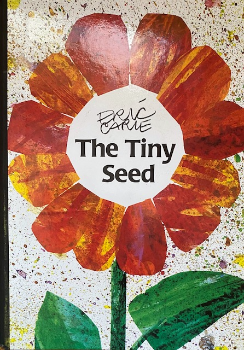 Sample activity to discuss fiction and nonfiction with The Tiny Seed by Eric Carle.
Sample activity to discuss fiction and nonfiction with The Tiny Seed by Eric Carle.- Ask questions for learners to evaluate nonfiction.
- Provide a check sheet with characteristics of nonfiction and share quality examples.
- Have learners complete check sheets with ratings of different characteristics and ask why and what proof they have to evaluate the criteria the way they did.
- Conduct a year long study of nonfiction and use multiple books to share qualities among them to show the comparisons. A matrix or chart with characteristics listed on one side and the names of the books across the top.
Biography
Biography - Characteristics or Elements
- Describe and discuss the life of a real person
- Information is based on fact
- Incidents, dialogue, and people are accurate and from a reliable source using first person accounts when available
- The person's life story is told with respect to other people and events of the time in which they lived
- Develops an understanding of the places, times, events, and other people when the person lived
- Tells the story in a style and tone that the reader/listener can relate to the person and believe in their humanness
- Develops a person as a real and interesting person not a persona or stereotypical member of a particular group.
Sample Questions to Help Analyze Biography
- List the events in the main character's life that you believe were note worthy.
- Describe why you believe those events were note worthy.
- List the events in the main character's life that you believe were harmful or hurtful to his or her self or others.
- Describe why you believe those events were harmful or hurtful to his or her self or others.
- Describe the main events that you believe influenced the main character through his or her life.
- Describe the influence those events had.
- Describe the characters you believe influenced the main character through his or her life.
- Describe the influence those characters had.
- Describe what personality traits the main character had.
- Describe how each personality trait shaped his or her life.
- Describe how some of those traits were beneficial and how some were not.
- Were there decisions the main character made that you believe were made well? If so, describe those decisions and what you would have done differently, and your expectations of what those different results would do.
- Were there decisions the main character made that you believe were not made well? If so, describe those decisions and what you would have done differently, and your expectations of what those different results would do.
- What, if anything, was there that you learned about the main character's life that could be helpful for you in your life?
- Make a list of what you believe characterizes this person.
- What difference were made by this person?
- How would you classify this person? As a sports star, mentor, hero, celebrity, ordinary Jane or Joe, or ...? and Why?
Favorite nonfiction, bilgraphy, & autobiography ooks
| Author | Titles | Notes |
|---|---|---|
|
We Remember the Holocaust. 1989. First person stories from survivors that describe Jewish life in Europe before the 1930's and Hitler's violent rise to power. Humiliations of Nazi rule, the struggle of families, the fight for survival in the ghettos, and the horror of the concentration camps. The stories along with illustrations of original photographs make this a powerful contribution to a history that must never be forgotten. |
|
| Louis Agassiz | Woods, Ponds, & Fields | 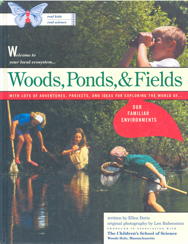 |
Aliki |
Corn is Maize-the Gift of the Indians. |
|
| Isaac Asimov |
|
Breakthrough in Science 1992. Twenty-six discoveries and the twenty-nine scientists who made them. From Archimedes to Goddard. nonfiction science history discoveries inventions |
| Jim Brandenburg | An American Safari | An American Safari. 1996. Fantastic illustrated story of North American prairie. Beautifully accurate photos of plants and animals in their natural habitat. Interesting information that selected animals and plants from e prairie habitat that will be or should be familiar to anyone who has lived on the prairie. However, the illustrations, story,, and history of both is woven together into a seamless comprehensive tale that compels the reader to take this safari through the North America states of Nebraska, the Dakotas, and Minnesota. Illustrated with incredibly clear up close photographs of animals in their native habit. As if the animals let him walk right up to them and take their pictures doing what they do naturally. |
| Monica Byles | Life in the Polar Lands. | Picture book |
| Lynne Cherry | A River Ran Wild. |
Picture book with illustrations of historical artifacts around the edges with the historical time and setting that illustrates the historical ecological story of the New England, Nashua River, and the effect it had on people and the effect people had on the river. The book is illustrated with the life along the river as well as the technology of the people through time. From the rivers first encounter with Native Americans up to present day. Not only is the story of the river and its relationship with humans told both in text and beautiful illustrations, but borders are embedded with color pencil drawings of the cultural artifacts of the people during the time being depicted. A great story with enough detail and inspiration stirrings to motivate readers to deeper research into history of this river or other more personal histories of the reader. While the story has utility for historical research and historical understanding the book is more significant in its contribution for being a ground breaking children's story about water pollution and unique picture book. |
| Windsor Chorlton | Wooly Mammoth: Life, Death, and Rediscovery |
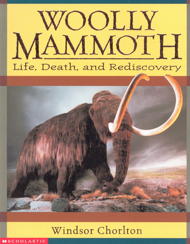 Wooly Mammoth: Life, Death, and Rediscovery. 2001 Great story and reference about a wooly mammoth found frozen in Siberia. |
| Pam Conrad | Prairie Visions: The Life and Times of Solomon Butcher. | Prairie Vision The Life and Times of Solomon Butcher. 1991. Mostly text with some pictures that tells the story of a photographer who photographed in Nebraska. If you have seen pictures of Nebraska and Kansas frontier life during the time of the sod houses, then the pictures you were looking at were probably taken by Butcher. Read the tales that go with the pictures and events that preceded and followed the click of the shutter. An important source for not only a look at this period in time, but the often overlooked significance of photography and how it changed culture and the way people looked at and wanted to be looked at by themselves and others. |
| Chris Crowe | Getting Away with Murder: The True Story of the Emmett Till Case. (2003) | Excellent account of this historic story. 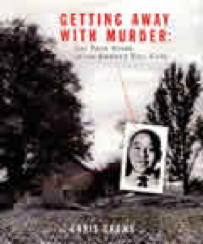 |
| Lois Ehlert | Feathers for Lunch |
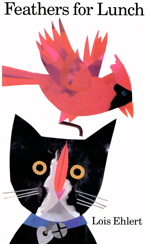
Picture book very colorful art created with torn paper. |
| Mary Ann Fraser | Sanctuary the Story of Three Arch Rocks | Sanctuary: The Story of Three Arch Rocks. Picture book with pictures and pencil illustrations. Ever wonder how nature preserves or animal sanctuaries come into existence? It literally takes years and a dedicated team of people (usually scientists of some sort) to catalogue every living thing within the boundaries of the area that is to become a sanctuary. Sanctuary: The Story of Three Arch Rocks, tells the story of how it became the first bird sanctuary in the United States. The text is supported with photographs and sketches to convey a little of what it must be like to create a protected area for wildlife. |
| Russell Freedman |
|
Any thing by Russell Freedman is quality nonfiction The Wright Brothers, by Russell Freedman. 1991. Excellent story about engineering of airplanes and how the brothers developed several different planes with the use of scientific data over time. A story beyond the of development over years that includes marketing the plane, winning a government contract, their personal lives, family, and travel of the Wright Brothers through their life.
Lincoln: A Photo Biography. 1987. This is by far the best and most accurate story about Lincoln, that doesn't go above 160 pages, and includes actual photographs and drawings. Also picture book. Mostly text with some pictures. All excellent historical stories. 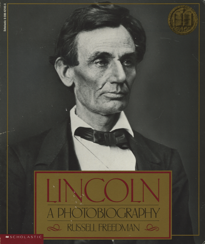 |
| Alisha Gabriel and Sue Heavenrich | Funky Fungi: 30 Activities for Exploring Molds, Mushrooms, Lichens, and More |

Funky Fungi: 30 Activities for Exploring Molds, Mushrooms, Lichens, and More. 2022 Fungi are everywhere! In the coldest corner of Antarctica and hot sandy desert dunes. In the air you breathe and the food you eat. So grab your gear and explore! |
| William George | Box Turtle At Long Pond. | Beautiful picture book about the ecology of a pond. |
| Ann Goodall | The Chimpanzees I Love: Saving their World and Ours | Picture book about Ann Goodall and her work with chimpanzees |
| Kate Jassem | Chief Joseph Leader of Destiny. |
Mostly text with some pictures |
| Bobbi Katz | The Creepy, Crawly book | Picture book |
| Tanya Lloyd Kyi | Snoozefest: The Surprising Science of Sleep (2021) | 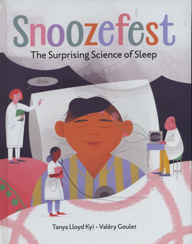
Snoozefest: The Surprising Science of Sleep. 2021 Non fiction sleep, health An eye-opening illustrated look at the science of sleep. Everything an adolescents needs to know about sleep and what keeps them up at night! Information, crucial for our health and happiness. A fascinating and readable story that explores why sleep is important, what happens in our bodies while we're sleeping, and how the science of sleep research has evolved. Includes sidebars and boxes full of fun facts that break the text into readable chunks. Along with links to information for life science, the human body, and health.
|
| Kathryn Lasky | She's Wearing a Dead Bird on Her Head |
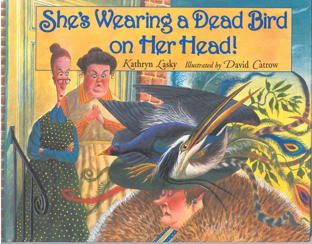
She's Wearing a Dead Bird on Her Head! Picture book about the founding of the Audubon Society. |
| Loreen Leedy | Tracks in the Sand. Bantam | 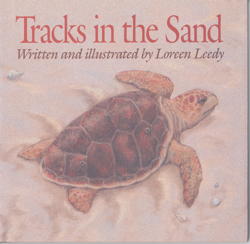
Picture book about the life of turtles. |
| Ellen Levine | If You Traveled West In A Covered Wagon | Mostly text some pictures. Excellent beginning book about pioneers who traveled west. |
| Elizabeth Levy | Are We There Yet? | Fun picture book about traveling |
| Matt Lilley | Good Eating: The Short Life of Krill (2022) | 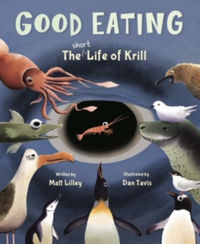
Good Eating: The Short Life of Krill Non fiction environment krill life cycle ocean life
Questions and advice are hurled at the krill on every page, but the krill never responds-because, after all, krill can't talk, and this is nonfiction. An accurate narrative of krill and how they are really good at eating, which makes them really good eating. And perhaps the most important animal in their ecosystem. Dan Tavis's illustrations are accurate, expressive, and alive with humor. For example the main character krill is so good at gobbling up phytoplankton, that he turns green, so we can pick him out from the crowd racing to escape a penguin's beak or a blue whale's gaping maw. |
| David Macaulay |
|
Books by David Macaulay include a story and sketches that accurately, and with detail, describe the construction of historical artifacts. All are quality books. Ship is a historical account of the building of a thirteenth century vessel combined with an archaeological discovery of the same vessel in modern times. A combination of pencil drawing illustrations and text that tell the story of the making of the structures in the title. A two part story of a ship and its construction in medieval Europe as described by afictionalized main character who visits the shipyard during its construction. The second part of the book describes an archeological expedition and its recovery of the same ship. Accurate descriptions provide insight into the vessel as well as how archeology can help uncover our history previously forgotten.
|
| Kenneth Mallory and Andrea Conley | Rescue of the Stranded Whales. | Mostly text with pictures |
| Albert Marrin | Flesh & Blood so Cheap: The Triangle and It's Legacy |
The story of 1911 American immigrants and their struggle to make it in a new land by working in unsafe factories and strive to balance their need to work with a need to improve working conditions in the crowded Triangle shirtwaist factory in New York. Known for its terrible workplace fire in which 146 people perished. |
| Patrick McDonnell | Me ... Jane |
Biography of Jane Goodall A story of Jane Goodall as a little girl and her dream of a life helping animals and how she grows up to change the world. |
| Jim Murphy |
|
Jim's books are mostly text with some pictures. Excellent historical stories. The Great Fire, Story of the great fire of Chicago,and Old lady Leary and the lantern in the shed ... Truth or fiction? Great story that goes back to try to answer this proverbial question with facts.
The Boys' War Confederate & Union Soldiers: Talk About the Civil War. 1993. Well written historically accurate information about the often times forgotten boys that fought in the American Civil War. Well written with pictures and a cohesive story that can move the reader through the book. |
| Christine and Jens Olesen | Chicken and egg. | Picture book |
| Andrea Davis Pinkney | Duke Ellington: The Piano Prince and the Orchestra | Duke Ellington: The Piano Prince and the Orchestra, Illustrated Brian Pinkney, text by Andrea Davis Pinkney |
| Robert Quackenbush | Pass The Quill, I'll Write A Draft. |
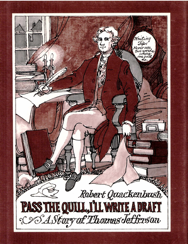
Pass the Quill, I'll Write a Draft A Story of Thomas Jefferson. 1989 Mostly text with pictures that tells the story about the writing of the US. Declaration of Independence and the men that wrote it. |
| Conrad Stein | The Story of Wounded Knee | Mostly text with pictures |
| George Sullivan | The Day The Women Got The Vote: A Photo History of the Women’s Rights Movement |
The Day The Women Got The Vote: A Photo History of the Women’s Rights Movement. This book is five stars for the photos that it includes. The text may not be five star, but the topics are so important and there are so few books that deal with the subject adequately for the young reader that this book is important as a jumping off point and a big gap filler of American History and specifically for women. |
| Anika Thomas | Life in the Ghetto |
Mostly text with pictures |
| Wendy Tokuda and Richard Hall | Humphrey the Lost Whale |
The true story about Humphrey the whale that swam into a river and how the people along the river worked to help him make it back to the ocean. Well written description of the whale and the actual story to motivate the reader through the story without resorting to sentimentality. age 7 years topic whales survival helping caring |
| Wendy Towle | The Real McCoy |
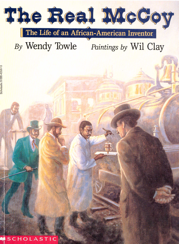
The Real McCoy Picture book excellent book about a Black American engineer and inventory. Most notable an automatic rail car oiler that gave rise to the expression in the title. |
| Edwin Tunis | Colonial Living | Mostly text with illustrations |
| Pamela S Turner | How to Build a Human: In Seven Evolutionary Steps (2022) | 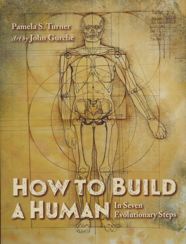
Non fiction human evolution walking erect hands cooking A great story told in seven steps along with detailed portraits by John Gurche. Seven steps on how, when, and why Homo sapiens: 1. stand up, 2. smash rocks, 3. get swelled heads, 4. take a hike, 5. invent barbecue, 6. start talking (and never shut up), and 7. become storytellers? Excellent source for middle level and above. Only weakness in the story is not including epigenetics, (changes in an organisms by modification of gene expression rather than alteration of the genetic code) along with the environmental impacts on evolution. Otherwise, an excellent source.
|
Editions Gallimard Jeunesse US edition Carroll Willim Westfall |
Architecture and Construction |
Architecture and Construction. 1994 Explores construction and architecture from simple shelters to the pyramids and skyscrapers. Different kinds of construction materials, and engineering designs across the ages. The books has a spiral binding with sturdy laminated pages of different shapes and some that unfold to show cathedrals in all their glory. Additionally ther are pages of different shapes and a pocket in the back for clippings. Outstanding to introduce readers to architecture and construction! Discovery visual arts engineering architecture |
| Forrest Wilson | What It Feels Like To Be A Building |
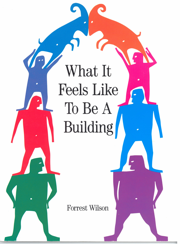
What It Feels Like To Be A Building Picture book that creatively describes structural forces related to architecture, and science. |
| Belle Wuthrich and Jennifer Dr. Gardy | It Takes Guts: How Your Body Turns Food Into Fuel (and Poop) | 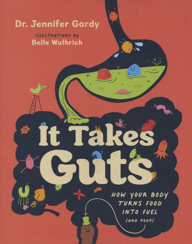
It Takes Guts: How Your Body Turns Food Into Fuel (and Poop). 2022 Non fiction digestion digestive system, health An illustrated 152 page book about the digestive system and microbiome for middle level readers with the story about the journey food takes from the time it enters our bodies to when it exits. A long and complicated process that involves many cells, tissues, and organs and the amazing tools they are at breaking down food with acids, enzymes, gastrin, ghrelin, villi, crypts, bile, insulin, an glucagon. The story also describes the role food and digestion play in your mood and immune system. And the incredible truth that not all bacteria is bad! Oh! the author also investigates the science behind burps, barfs, and farts, proving that learning about the wonderful world of your gut might not be everything you expected! |
| Howard Zinn | A Young People's History of the United States Any of the collections of the People's Stories are quality nonfiction:
|
|
|
||
|
Home: Literacy, media, literature, children's literature, & language arts
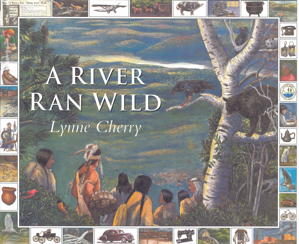 A River Ran Wild. 1992
A River Ran Wild. 1992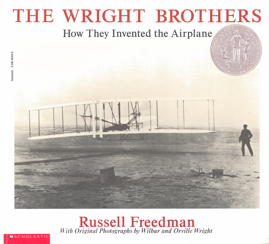
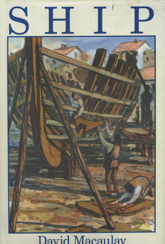
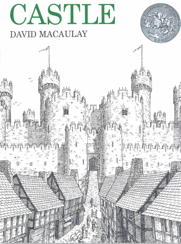
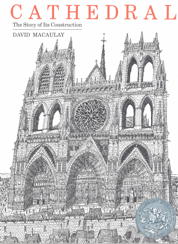
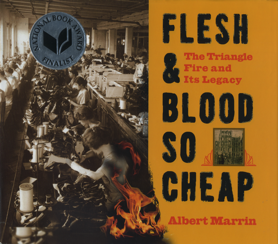 Flesh & Blood so Cheap: The Triangle and It's Legacy. 2011
Flesh & Blood so Cheap: The Triangle and It's Legacy. 2011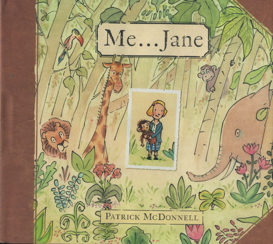 Me ... Jane. 2011
Me ... Jane. 2011 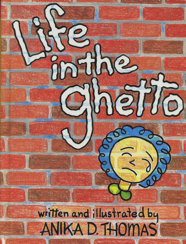 Autobiography
Autobiography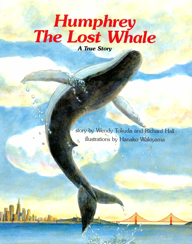 Humphrey the Lost Whale. 1986
Humphrey the Lost Whale. 1986